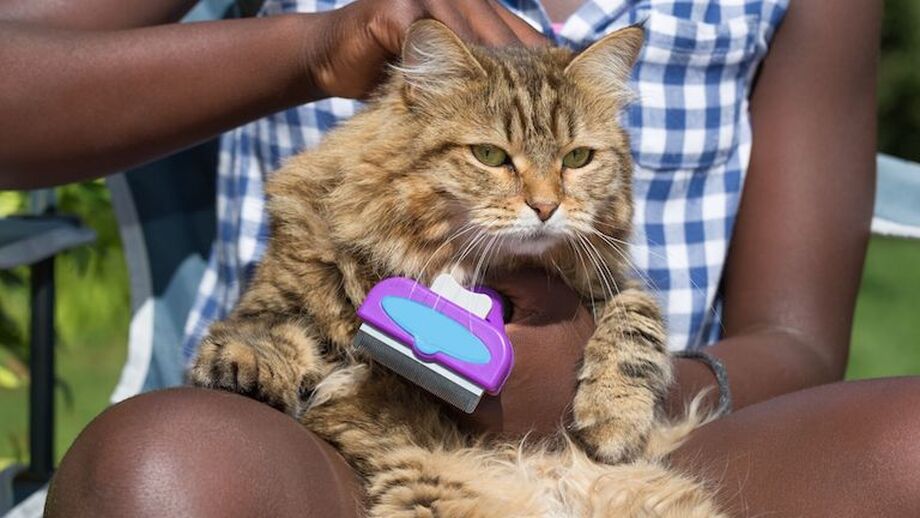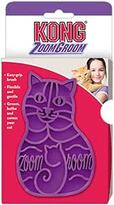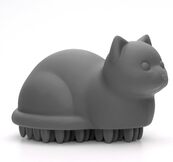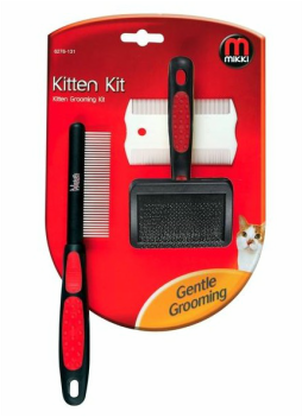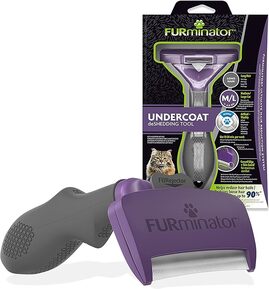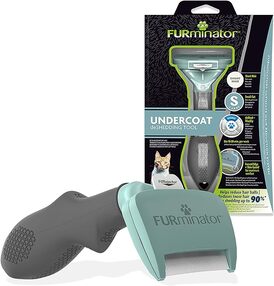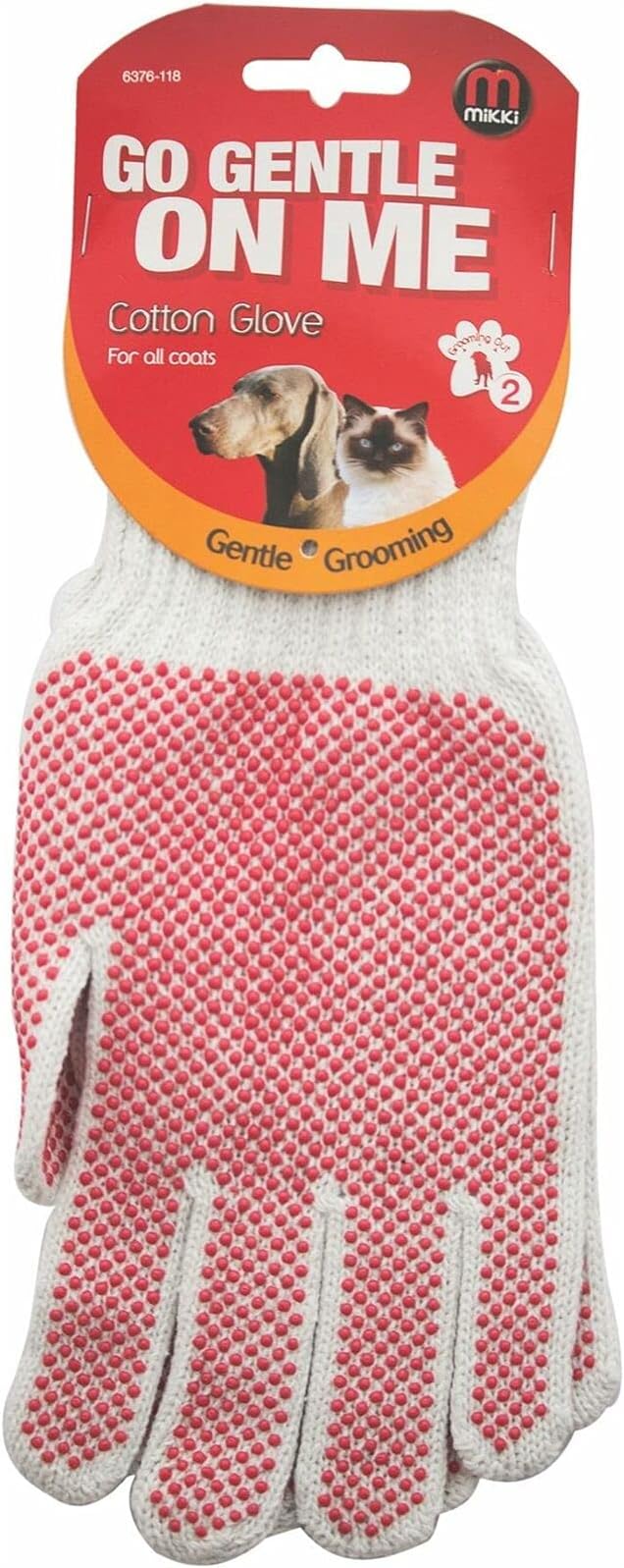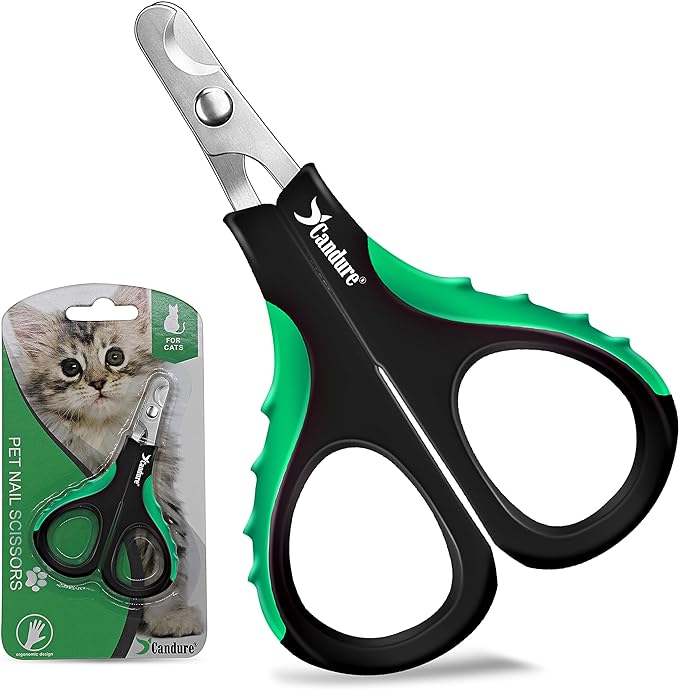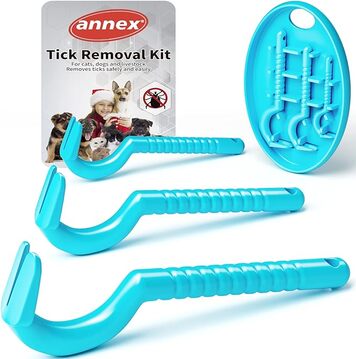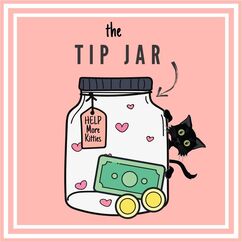I thought cats were supposed to look after their own fur coats by cleaning themselves, so why do I need to bother buying a grooming kit?
Normal, healthy cats should groom themselves throughout each day - it's part of their own auto-clean cycle to clean off traces of blood and guts from their "kill" that may otherwise attract unwanted attention from rivals or predators. It also helps to get rid of pesky parasites, distribute the natural coat oils and a few other useful bits that I'll mention later on.
The problem, is that in the pursuit of feline aesthetics, humans have bred cats for specific luxury fur lengths, shapes and textures that look and feel "nicer" for us. Unfortunately, these engineered features often come with some downsides for the cats that have them.
Long, wavy, dense or double fur textures may overwhelm a cat's natural ability to clean and look after themselves, which means they need our help. And believe it or not, having sparse fur (eg Rex breeds) or no fur (eg Sphynx cats) can bring its own set of issues.
So, yes, long story short, you should definitely aim to groom your cat - even if they have never had matted fur in the past or at the moment. As you'll see by reading on, there are lots of reasons why they might develop coat issues in the future. That's why it's good to train your cat to accept being groomed while it's not-so vital. That's where I can help. When you adopt the tips I'll share with you in this article, you'll both be less stressed with their grooming routine and your cat will be happier and healthier.
Coat condition and the link to a cat's health & happiness
It's quite possible for a cat to be very unwell and still have relatively good coat condition, so it's not the perfect guide for healthiness, but if you do see changes with a cat's fur condition it can be a very important clue that they are not in optimal health.
It's a very good general principle with any pet, to adopt the approach that any change that you notice is best checked by a vet. It helps ensure that you're not missing anything that could indicate an underlying problem like stress or illness. Sometimes it's something easily treatable mind you, so all the more reason to pay attention to it and act early!
What can a cat's grooming pattern and frequency tell us about a cat's general health?
Older, overweight and arthritic cats or those with oral/dental pain will often struggle to groom themselves effectively - meaning they groom less often and avoid certain harder to reach areas (like the back, flanks and thighs and around their bottom), which means that they are prone to developing matted clumps of fur and dandruff. This is basically due to the fact that when something is too difficult or painful, cats "keep calm and carry on", adopting behaviours that trigger less pain or if the pains bad enough, avoid them altogether.
Sometimes cats will do the opposite if they are stressed or in pain and instead, they overgroom a sore area. Provided it doesn't create more pain to access the affected area, some cats will repeatedly lick at it (eg cats with cystitis may lick at their genitals or at the tummy overlying where their sore bladder is). Similarly cats with allergic/itchy skin or parasites (eg fleas) may over-groom to relieve inflamed and irritable skin and end up taking in more hair by nibbling and licking excessively - leading to gut hairballs - that's why vomiting furballs can be a sign of itchy skin or pain.
What can the condition of a cat's hair actually tell us about their health status?
Certain health conditions affect the rate that hair grows and is lost at. Hormonal changes (eg pregnancy, lactation) & illnesses (eg hyperthyroidism, certain cancers) can cause hair thinning and increased shedding and subsequent clumping and matting. It can also affect the quality and health of each strand of hair, as can nutritional deficiencies (more common with homemade or nutritionally incomplete or unbalanced diets) and skin/hair shaft infections with fungi (eg ringworm).
What can the condition of a cat's hair tell us about their stress levels?
Cats living in environments that place them under longterm (chronic) stress can start to over-groom their coats and sometimes even traumatise the skin below, both of which loosen nearby hairs and increase shedding. If cats are regularly feeling threatened or scared (eg by other pets, people, objects, noises), or are living with feelings of loneliness, boredom or frustration, then stress hormones like cortisol are likely raised, and that can trigger hair loss to increase. Sudden stresses (eg things like going to the vet or being picked up and held, or hugged against their wishes at home) can causes a spike in stress hormones too, so are common scenarios that can momentarily trigger the fur to fly! Worth bearing in mind next time someone in a blank jumper offers your white cat a one-way hug! #KittyKarma
Why is my cat constantly shedding fur?
As springtime approaches, the days start to get longer and we are all bathed in long awaited sunlight. This triggers a cat's body to start shedding all that extra fur that grew as insulation, to see them through the cooler winter months. Later in the year, as the daylight periods reduce in the autumn, the situation changes as any existing dead hair is shed, to make way for a fresh batch of hair growth in preparation for the extra insulation needed for wintertime.
More cats today have part- or full-time indoor lifestyles which means they are exposed to more artificial light than they would naturally be in the wild. This disrupts the traditional, natural twice yearly shedding cycle of cat hair and means they often shed all year long too with perhaps heavier shedding in spring and autumn.
Tangles, knots and mats
How do these start in the first place?
As anyone with long hair knows, daily life and even sleep, causes hair to tangle, and it's the same for our cats' fur (even the shorthaired breeds). Cats have a barbed tongue that acts like a comb. Just like us, if their hair doesn't get regular combing, then small knots start to form, which if left, can turn into bigger tangles. Cats with dense undercoats like Ragdolls, Maine Coons, Forest cats and Siberians are at particular risk of forming mats because there are more hairs per square unit of skin. Other causes of mats in more outdoorsy cats include tree sap, seed cases, twigs and even slugs getting stuck in the fur.
Unlike humans, each cat hair does not grow continually, it has a fixed length; however each individual cat hair loosens and is meant to be shed from the cat through self-grooming (or perhaps via a favourite article of your clothing of contrasting colour of course!). If any loosened hairs are not regularly removed either by your cat or your grooming tools, then they start to accumulate and adhere to each other. New hairs growing from beneath only exacerbate the compacting of the unshed dead hair. Once a substantial amount of dead hairs attach together (and to the newly grown fur beneath it) it becomes tightly packed and flat looking, like felt balls.
Should I bother with the stress of removing very small knots and mats?
Yes! As I always say, prevention is better than cure. Once the micro mish-mashing of fur begins and the strands begin to felt together a small knot/mat can become much bigger, tighter and take longer to remove. Just like a snowball, over time more hair grows and old, shed hair lingers. And with nowhere to go, more hair just sticks to more hair! The result can be a cat that is covered in rafts of interconnected tightly matted, felted fur. Meowch!!!
Is matted fur just a cosmetic thing or does it affect my cat in other ways?
As mentioned before, even mildly matted fur may indicate a bigger health problem so they're rarely just a cosmetic issue. If the mats get larger and more crop up, cats can become quite "cranky" and rightfully so - it bloomin' hurts to have big chunks of fur entangled and tethered to adjacent bits of skin!
Moderately to severely matted fur is a real welfare concern because it restricts a cat's normal movement and is a source of pain, pulling on their fragile skin as they try to go about their every day activities. It also prevents cats from carrying out basic natural behaviour like a cat's natural self-cleaning grooming cycle that usually goes on after meals and often in between. Understandably these cats find it harder to reach to groom all over or get to the coat and skin underneath the matted fur effectively - the natural oils from the skin and the dead skin cells (dandruff) start to accumulate underneath the matted fur because they can't fall off as they ordinarily would.
Matted fur also reduces ventilation and evaporation at the skin's surface and affects the cat's ability to thermoregulate - this means that cats in hot climates or cats indoors with central heating can overheat more easily. Lack of airflow to the skin makes it more moist and warm which creates the perfect environment for dermatitis and skin infections to develop - especially if the skin has been traumatised by the constant tugging of tightly matted fur - these micro-sized skin wounds can then allow bacteria to enter below the skin and causes a vicious cycle of further damage and pain.
Many cats can become more "lazy" and sedentary because their flexibility can be physically restricted by the tight fur or they have learned that sitting still avoids their discomfort. Weight gain from reduced activity acts only to further compound the situation and leads to an increased risk of diseases like diabetes and osteoarthritis - both of which can exacerbate skin/coat/grooming issues further.
I've had to remove live maggots from matted cats in the warmer months, and their humans have been mortified that they'd not spotted a problem. I can't express enough, how keeping on top of your cat's grooming routine is a vital part of your commitment to giving your cat a happy life.
Can I manage my cat's mats at home?
When your cat has a few very small, loose mats in their fur, relatively close to the tip of the fur, then yes, many cats will allow you to shave or trim away mats at home. It's very easy to accidentally cut their skin so be careful and don't try and cut them away if they are very close to the skin.
Once there are many or larger areas of matted fur, or mats that are tightly adhered to your cat, then usually it's a professional job. You'd struggle to find a cat that would allow you anywhere near them with brushes and combs at this advanced stage.
Who's the best person to groom my matted cat, a cat groomer or a vet?
A trip to your vets will likely be necessary for medium to large mats, as it can be kinder for most cats to undergo sedation for a full and proper "de-mat" with industrial strength electric clippers. It's a long laborious process at this advanced stage so can challenge even the most tolerant of cats! If your cat has any underlying illness or is older, then your vet will be better placed to monitor your cat during the procedure too.
Although there are a few private cat grooming services who use high welfare, cat friendly techniques to help deal with low grade matting and coat maintenance, sadly without access to prescription sedatives many groomers resort to harsh and unnecessary physical force in my experience. I've treated some horrendous and ultimately fatal internal injuries to cats that have visited grooming salons with unsavoury and abusive practises, so I would always recommend contacting your cat-friendly vet in the first instance. They may even have a good rapport with a recommended local groomer.
How can I help avoid the matted fur getting so bad that a vet needs to get involved?
Prevent the problem starting by regularly grooming them at home
Like any aspect of health and bodily upkeep, prevention is always better than cure. As a caring and responsible cat person there's an obligation to try and keep cats' skin and coats clean and healthy, which means they need to be free of mats, debris and parasites. It is particularly important for long-haired breeds (eg Persian, Maine Coon, Ragdolls) or densely coated breeds (eg British and Exotic Shorthair, Burmilla), but it really applies to all cats, moggies included.
Consider all the other benefits of grooming your cat
Regularly grooming your cat, the right way (see my tips further down the page), is a great opportunity to have calm, one-on-one time to bond with each other and also allows you a regular opportunity to check for skin diseases, lumps, wounds, parasites and importantly it reduces the chances of matted fur and all the problems and welfare concerns that come along with it.
Normalise grooming & start a routine from an early age
It helps massively if grooming is introduced to all kittens in the first few months of life. Getting your new kitten to associate being groomed by you as a pleasurable experience is a really important early lesson and it will really help them cope with this and other handling throughout their life. Even if you get your cat later on in their life, there are still lots of ways to make grooming a positive experience, but you need to introduce grooming slowly and gently and always stop before your cat has had enough.
Be patient
Patience is essential with cats in any setting. Scolding or hitting your cat for not co-operating is not appropriate in any circumstance. See my top tips below for successful grooming in cats.
Use the right tools for the job
Of course with all the patience in the world, without the right tools you will not succeed. There are lots of great grooming bits & pieces to help us with this often difficult task. Here are a few of my purrsonal favourites...
Normal, healthy cats should groom themselves throughout each day - it's part of their own auto-clean cycle to clean off traces of blood and guts from their "kill" that may otherwise attract unwanted attention from rivals or predators. It also helps to get rid of pesky parasites, distribute the natural coat oils and a few other useful bits that I'll mention later on.
The problem, is that in the pursuit of feline aesthetics, humans have bred cats for specific luxury fur lengths, shapes and textures that look and feel "nicer" for us. Unfortunately, these engineered features often come with some downsides for the cats that have them.
Long, wavy, dense or double fur textures may overwhelm a cat's natural ability to clean and look after themselves, which means they need our help. And believe it or not, having sparse fur (eg Rex breeds) or no fur (eg Sphynx cats) can bring its own set of issues.
So, yes, long story short, you should definitely aim to groom your cat - even if they have never had matted fur in the past or at the moment. As you'll see by reading on, there are lots of reasons why they might develop coat issues in the future. That's why it's good to train your cat to accept being groomed while it's not-so vital. That's where I can help. When you adopt the tips I'll share with you in this article, you'll both be less stressed with their grooming routine and your cat will be happier and healthier.
Coat condition and the link to a cat's health & happiness
It's quite possible for a cat to be very unwell and still have relatively good coat condition, so it's not the perfect guide for healthiness, but if you do see changes with a cat's fur condition it can be a very important clue that they are not in optimal health.
It's a very good general principle with any pet, to adopt the approach that any change that you notice is best checked by a vet. It helps ensure that you're not missing anything that could indicate an underlying problem like stress or illness. Sometimes it's something easily treatable mind you, so all the more reason to pay attention to it and act early!
What can a cat's grooming pattern and frequency tell us about a cat's general health?
Older, overweight and arthritic cats or those with oral/dental pain will often struggle to groom themselves effectively - meaning they groom less often and avoid certain harder to reach areas (like the back, flanks and thighs and around their bottom), which means that they are prone to developing matted clumps of fur and dandruff. This is basically due to the fact that when something is too difficult or painful, cats "keep calm and carry on", adopting behaviours that trigger less pain or if the pains bad enough, avoid them altogether.
Sometimes cats will do the opposite if they are stressed or in pain and instead, they overgroom a sore area. Provided it doesn't create more pain to access the affected area, some cats will repeatedly lick at it (eg cats with cystitis may lick at their genitals or at the tummy overlying where their sore bladder is). Similarly cats with allergic/itchy skin or parasites (eg fleas) may over-groom to relieve inflamed and irritable skin and end up taking in more hair by nibbling and licking excessively - leading to gut hairballs - that's why vomiting furballs can be a sign of itchy skin or pain.
What can the condition of a cat's hair actually tell us about their health status?
Certain health conditions affect the rate that hair grows and is lost at. Hormonal changes (eg pregnancy, lactation) & illnesses (eg hyperthyroidism, certain cancers) can cause hair thinning and increased shedding and subsequent clumping and matting. It can also affect the quality and health of each strand of hair, as can nutritional deficiencies (more common with homemade or nutritionally incomplete or unbalanced diets) and skin/hair shaft infections with fungi (eg ringworm).
What can the condition of a cat's hair tell us about their stress levels?
Cats living in environments that place them under longterm (chronic) stress can start to over-groom their coats and sometimes even traumatise the skin below, both of which loosen nearby hairs and increase shedding. If cats are regularly feeling threatened or scared (eg by other pets, people, objects, noises), or are living with feelings of loneliness, boredom or frustration, then stress hormones like cortisol are likely raised, and that can trigger hair loss to increase. Sudden stresses (eg things like going to the vet or being picked up and held, or hugged against their wishes at home) can causes a spike in stress hormones too, so are common scenarios that can momentarily trigger the fur to fly! Worth bearing in mind next time someone in a blank jumper offers your white cat a one-way hug! #KittyKarma
Why is my cat constantly shedding fur?
As springtime approaches, the days start to get longer and we are all bathed in long awaited sunlight. This triggers a cat's body to start shedding all that extra fur that grew as insulation, to see them through the cooler winter months. Later in the year, as the daylight periods reduce in the autumn, the situation changes as any existing dead hair is shed, to make way for a fresh batch of hair growth in preparation for the extra insulation needed for wintertime.
More cats today have part- or full-time indoor lifestyles which means they are exposed to more artificial light than they would naturally be in the wild. This disrupts the traditional, natural twice yearly shedding cycle of cat hair and means they often shed all year long too with perhaps heavier shedding in spring and autumn.
Tangles, knots and mats
How do these start in the first place?
As anyone with long hair knows, daily life and even sleep, causes hair to tangle, and it's the same for our cats' fur (even the shorthaired breeds). Cats have a barbed tongue that acts like a comb. Just like us, if their hair doesn't get regular combing, then small knots start to form, which if left, can turn into bigger tangles. Cats with dense undercoats like Ragdolls, Maine Coons, Forest cats and Siberians are at particular risk of forming mats because there are more hairs per square unit of skin. Other causes of mats in more outdoorsy cats include tree sap, seed cases, twigs and even slugs getting stuck in the fur.
Unlike humans, each cat hair does not grow continually, it has a fixed length; however each individual cat hair loosens and is meant to be shed from the cat through self-grooming (or perhaps via a favourite article of your clothing of contrasting colour of course!). If any loosened hairs are not regularly removed either by your cat or your grooming tools, then they start to accumulate and adhere to each other. New hairs growing from beneath only exacerbate the compacting of the unshed dead hair. Once a substantial amount of dead hairs attach together (and to the newly grown fur beneath it) it becomes tightly packed and flat looking, like felt balls.
Should I bother with the stress of removing very small knots and mats?
Yes! As I always say, prevention is better than cure. Once the micro mish-mashing of fur begins and the strands begin to felt together a small knot/mat can become much bigger, tighter and take longer to remove. Just like a snowball, over time more hair grows and old, shed hair lingers. And with nowhere to go, more hair just sticks to more hair! The result can be a cat that is covered in rafts of interconnected tightly matted, felted fur. Meowch!!!
Is matted fur just a cosmetic thing or does it affect my cat in other ways?
As mentioned before, even mildly matted fur may indicate a bigger health problem so they're rarely just a cosmetic issue. If the mats get larger and more crop up, cats can become quite "cranky" and rightfully so - it bloomin' hurts to have big chunks of fur entangled and tethered to adjacent bits of skin!
Moderately to severely matted fur is a real welfare concern because it restricts a cat's normal movement and is a source of pain, pulling on their fragile skin as they try to go about their every day activities. It also prevents cats from carrying out basic natural behaviour like a cat's natural self-cleaning grooming cycle that usually goes on after meals and often in between. Understandably these cats find it harder to reach to groom all over or get to the coat and skin underneath the matted fur effectively - the natural oils from the skin and the dead skin cells (dandruff) start to accumulate underneath the matted fur because they can't fall off as they ordinarily would.
Matted fur also reduces ventilation and evaporation at the skin's surface and affects the cat's ability to thermoregulate - this means that cats in hot climates or cats indoors with central heating can overheat more easily. Lack of airflow to the skin makes it more moist and warm which creates the perfect environment for dermatitis and skin infections to develop - especially if the skin has been traumatised by the constant tugging of tightly matted fur - these micro-sized skin wounds can then allow bacteria to enter below the skin and causes a vicious cycle of further damage and pain.
Many cats can become more "lazy" and sedentary because their flexibility can be physically restricted by the tight fur or they have learned that sitting still avoids their discomfort. Weight gain from reduced activity acts only to further compound the situation and leads to an increased risk of diseases like diabetes and osteoarthritis - both of which can exacerbate skin/coat/grooming issues further.
I've had to remove live maggots from matted cats in the warmer months, and their humans have been mortified that they'd not spotted a problem. I can't express enough, how keeping on top of your cat's grooming routine is a vital part of your commitment to giving your cat a happy life.
Can I manage my cat's mats at home?
When your cat has a few very small, loose mats in their fur, relatively close to the tip of the fur, then yes, many cats will allow you to shave or trim away mats at home. It's very easy to accidentally cut their skin so be careful and don't try and cut them away if they are very close to the skin.
Once there are many or larger areas of matted fur, or mats that are tightly adhered to your cat, then usually it's a professional job. You'd struggle to find a cat that would allow you anywhere near them with brushes and combs at this advanced stage.
Who's the best person to groom my matted cat, a cat groomer or a vet?
A trip to your vets will likely be necessary for medium to large mats, as it can be kinder for most cats to undergo sedation for a full and proper "de-mat" with industrial strength electric clippers. It's a long laborious process at this advanced stage so can challenge even the most tolerant of cats! If your cat has any underlying illness or is older, then your vet will be better placed to monitor your cat during the procedure too.
Although there are a few private cat grooming services who use high welfare, cat friendly techniques to help deal with low grade matting and coat maintenance, sadly without access to prescription sedatives many groomers resort to harsh and unnecessary physical force in my experience. I've treated some horrendous and ultimately fatal internal injuries to cats that have visited grooming salons with unsavoury and abusive practises, so I would always recommend contacting your cat-friendly vet in the first instance. They may even have a good rapport with a recommended local groomer.
How can I help avoid the matted fur getting so bad that a vet needs to get involved?
Prevent the problem starting by regularly grooming them at home
Like any aspect of health and bodily upkeep, prevention is always better than cure. As a caring and responsible cat person there's an obligation to try and keep cats' skin and coats clean and healthy, which means they need to be free of mats, debris and parasites. It is particularly important for long-haired breeds (eg Persian, Maine Coon, Ragdolls) or densely coated breeds (eg British and Exotic Shorthair, Burmilla), but it really applies to all cats, moggies included.
Consider all the other benefits of grooming your cat
Regularly grooming your cat, the right way (see my tips further down the page), is a great opportunity to have calm, one-on-one time to bond with each other and also allows you a regular opportunity to check for skin diseases, lumps, wounds, parasites and importantly it reduces the chances of matted fur and all the problems and welfare concerns that come along with it.
Normalise grooming & start a routine from an early age
It helps massively if grooming is introduced to all kittens in the first few months of life. Getting your new kitten to associate being groomed by you as a pleasurable experience is a really important early lesson and it will really help them cope with this and other handling throughout their life. Even if you get your cat later on in their life, there are still lots of ways to make grooming a positive experience, but you need to introduce grooming slowly and gently and always stop before your cat has had enough.
Be patient
Patience is essential with cats in any setting. Scolding or hitting your cat for not co-operating is not appropriate in any circumstance. See my top tips below for successful grooming in cats.
Use the right tools for the job
Of course with all the patience in the world, without the right tools you will not succeed. There are lots of great grooming bits & pieces to help us with this often difficult task. Here are a few of my purrsonal favourites...
Tools that gently massage and loosen fur at the same time
|
This great grooming tool is a must have for any cat person's grooming routine. The flexible soft silicone projections work by gently massaging the hairs at the level of the skin, releasing any that have been shed or were ready to be. They're purrfect for introducing kittens to grooming as well as cats who hate being groomed with regular combs and brushes.
|
There's no tugging involved making the Zoom Groom ideal for elderly or arthritic cats. The downside is that they're more of a preventative tool, and are not helpful for removing knots once tangles have already set in. There are alternative options. like this cute novelty cat shaped silicone groomer brush.
NB: Always follow up any grooming session with all over body strokes using moist hands or rubber gloves, as loosening excessive amounts of hair can increase the risk of hairballs when your cat next tries to groom themselves.
NB: Always follow up any grooming session with all over body strokes using moist hands or rubber gloves, as loosening excessive amounts of hair can increase the risk of hairballs when your cat next tries to groom themselves.
The best starter kit for grooming cats
|
This Mikki Kitten Kit grooming combination set is great for kittens and adult cats. It is best used after the Zoom Groom as it is particularly good at rounding up all the loosened hair. Although it can also be used instead of the Zoom Groom, especially on cats with dense, plush undercoats (eg Burmillas, British shorthairs). I don't find this as effective on cats with thinner, or more sleek coats (eg Siamese).
I particularly like the fact that unlike many similar cushion and pin style "slicker" brushes, the pins on this one have plastic-coated tips which make this a gentle but still very effective brush for cats with normal to dense coats. Never use a wide brush suitable for medium or large dogs on your cat. It won't follow the contours of your cat's delicate body and the pins are more likely to catch sensitive areas or fragile skin and cause trauma, or at best be uncomfy for your cat and bring your grooming session to a premature end. |
"Cushion and pin" style slicker brushes (or the toothed moulting tools mentioned in the next section for that matter) are also not suitable to use on areas like the head, neck, ears, bottom, feet and webbed skin flaps in the armpit and groin. Be really really careful and use light movements over boney prominences like the shoulder blades, elbows, wrists, ankles, knee and spines. Tune in to what they're thinking and feeling by focussing on their body language (see below):
The big comb in this kit is handy for locating matted areas that may not be visible, and for gently teasing out small areas of newly tangled fur.
A flea comb is a handy tool for checking your kitten for fleas or flea dirt but remember that it will never be an effective substitute for preventing infection using prescription medications from your vet.
The big comb in this kit is handy for locating matted areas that may not be visible, and for gently teasing out small areas of newly tangled fur.
A flea comb is a handy tool for checking your kitten for fleas or flea dirt but remember that it will never be an effective substitute for preventing infection using prescription medications from your vet.
Moulting combs for dead hair and undercoat care
Moulting combs are very effective at removing dead or shed hair, especially the undercoat. The Furminator brand is my favourite and comes in a range of different blade widths that are tailored for both cat size and coat length.
Start by selecting the blade width that best suits your cat's size - the narrow bladed tool (mint green) is best for small cats and the wider one (purple) is best for medium to large cats.
Then pick the tool that's right for your cat's coat length - there's one for short haired cats and one for longer haired cats within each size category. A more affordable option is the Mikki Moult Master for cats - the medium size suits most cats.
Start by selecting the blade width that best suits your cat's size - the narrow bladed tool (mint green) is best for small cats and the wider one (purple) is best for medium to large cats.
Then pick the tool that's right for your cat's coat length - there's one for short haired cats and one for longer haired cats within each size category. A more affordable option is the Mikki Moult Master for cats - the medium size suits most cats.
The toothed edge is designed to allow the tool to pull through the topcoat easily, gently removing the undercoat and loose hair without cutting or damaging your cat's delicate skin. That said, these tools still involve a little pulling, so as with any grooming tool always be very gentle. Very matted cats or those with sensitive or fragile skin will not be suitable for this grooming tool. I would also avoid areas as for the slicker brush advice above.
Clippers are safer than scissors & blades for matted fur
There's a temptation to reach for scissors in these situations, but cat skin is so delicate and while you are busy focusing on the area of interest at the scissor's crossed cutting area, the tips can meanwhile be snipping your cat's skin further along. I never suggest owners use scissors for this reason.
Where a few small mats are present, a pair of these mini Wahl Cordless clippers are an absolute lifesaver. They are small, light and relatively quiet. They take a single AA battery, they cut very well and new blades are available from Wahl UK directly when they need replacing.
Where a few small mats are present, a pair of these mini Wahl Cordless clippers are an absolute lifesaver. They are small, light and relatively quiet. They take a single AA battery, they cut very well and new blades are available from Wahl UK directly when they need replacing.
All you need is glove! (da da dada daaa)Drain holes in our showers and baths get clogged with hair because massaging shampoo onto our heads and rinsing it off loosens all our dead and shed hairs. The same applies to cats after grooming - their version of a washing session.
That's why you should always make sure you finish off every grooming session with removing as much loosened hair as possible. If you don't, your cat will ingest all the hair you've loosened and you may very likely cause an internal gut hairball, which in some cats can make them very unwell or create a gut blockage and require invasive and expensive surgery. The best way to remove loosened hair from you cat (and your clothes for that matter) is to use a good old fashioned pair of rubber washing up gloves to stroke your cat all over. Long sweeping half body length strokes using both your hands works best.
You can also use a fresh pair of rubber-palmed gardening gloves or purchase these cotton grooming gloves with silicone dots. |
Nailing it!
|
My old favourites for cutting cat claws are small dedicated cat-specific claw clippers. The nails of small dogs are a completely different shape and texture from cat claws, so never try using a larger sized dog specific nail trimmer on a kitty - they're unwieldy to use and you'll end up cutting something you shouldn't! Meowch! This would then reinforce to your cat that their suspicions about you being up to mischief were right. You'll then struggle to do the job next time when you have the right kit (so to speak).
|
Tick remover
|
Save you and your cat an unnecessary vet trip and get one of these grasp and twist tick removers. Skip any tweezer-like contraptions - as they risk decapitating the tick - so you end up with the tick's body in your tweezers and the head or mouth parts left embedded in your cat to cause a foreign body reaction. Cue vet visit!
The only foolproof way to remove an entire adult tick - head, mouthparts and all - is with a grasp and twist style tick remover set like the one shown here. The three different size tick removing tools ensure that you can nab those pesky critters, be they little or be they large! |

